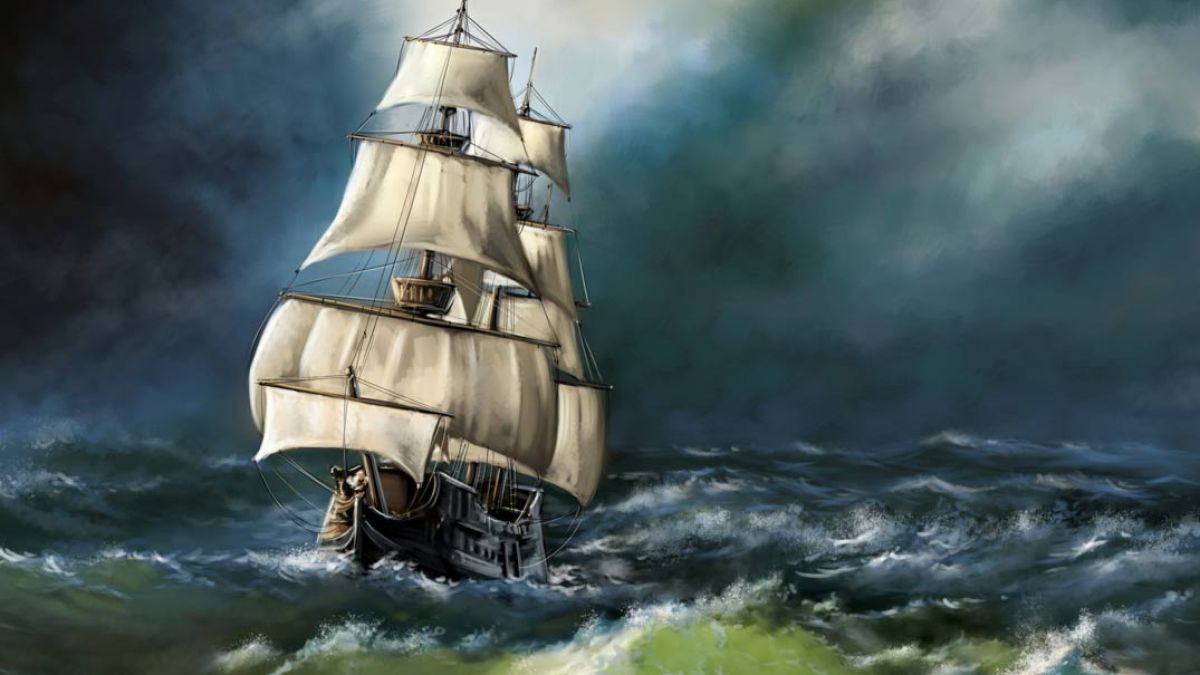On December 4, 1872, as they crossed the Atlantic Ocean towards Europe, days after they left New York Harbor, the crew of the gigantic ship "De Gracia" saw a sailing ship on the horizon moving incorrectly, one of its sails flapping in the wind.
The French magazine "Le Point" tells the story of this mysterious ship, which has become a mystery and the subject of several theories, none of which convincingly explain what happened.
Where Captain David Reed Moorhouse, commander of "Dee Gracia", recognized the ship "Mary Celeste", which left the same port a week before him, led by his friend Benjamin Spooner Briggs, and said in astonishment, "I do not see anyone at the helm," and ordered to head towards it.
Nothing is missing but the crew
3 sailors of the "Die Gracia" got on board and searched it from start to finish, finding no human presence, and noticing that the sails were badly lined, the mainsail ropes were cut, the steering wheel turned in the void, and that there was enough provisions for 6 months in the hold and with it Plenty of drinking water, so nothing is missing on the ship except for the crew.
So where did the crew go?
There is no indication of this, according to the magazine, as the ship is not about to sink, and the log in the captain's cabin does not record anything.
With the deepening of the search, it appeared that some navigation tools were missing, in addition to the maritime transport contract, the navigation book and a small boat, so did the crew use it to escape?
Why do they flee from their ship while it is in excellent condition?
Morehouse and crew wonder without finding an answer, before deciding to take the craft to Gibraltar to claim their share as wreck finders at sea.
The painting "Shipwreck" by the Norwegian painter Knud Bady (social networking sites)
"damned" ship
The subsequent investigation revealed that this ship was built in 1860 and began sailing under the name Amazon, and it seemed from its first days that it was "cursed", as its first captain died immediately, as the magazine says, and its owners went bankrupt one after the other, before moving from New York in the name of Mary Celeste in October 1872, under the command of a new captain and co-owner, Benjamin Spooner Briggs (37 years old).
Mary Celeste set off on November 5 for Genoa, Italy, carrying 1,701 barrels of non-drinkable denatured alcohol. The logbook did not report any incidents during the first three weeks of her voyage, but what happened on November 26 until Sailors disappear?
An earthquake, a giant octopus, or a hallucinogenic mushroom?
Dozens of hypotheses were presented, each crazier than the other, one accusing the crew of drunkenness, killing the captain and his family, and fleeing on a boat, but the alcohol is not drinkable, which denies this hypothesis. As for the second theory, it is that the captain of Mary Celeste and the captain of "Dee Gracia" agreed before they left. New York is to undertake an operation to claim the reward due to whoever finds a wreck at sea, so it is possible that Briggs killed his crew before Morehouse picked him up, to take him to Gibraltar, but in this case Briggs would lose more than he would gain because he is a part owner.
The third theory believes that the captain and crew of "Di Gracia" stormed the Mary Celeste and massacred her entire crew, while the fourth theory believes that a giant hungry octopus attacked the ship and ate its crew, and a fifth theory expects that the crew was kidnapped by a flying saucer, and a sixth imagines that the water or food is contaminated with a hallucinogenic fungus that pushes crew to jump into the water, or that a hurricane carried all those present according to a seventh theory, and other hypotheses.
In the end, the Diego Gracia's rescuers received one-sixth of the insured value of the ship and its cargo, or $7,700 at the time (about $120,000 today), and the Mary Celeste was returned to Boston by her owners.
But the bad luck did not end, as the father of one of the owners drowned while on board the ship, which changed hands 17 times in the next 13 years before the last owner threw it into a coral reef near Haiti on January 3, 1885.

